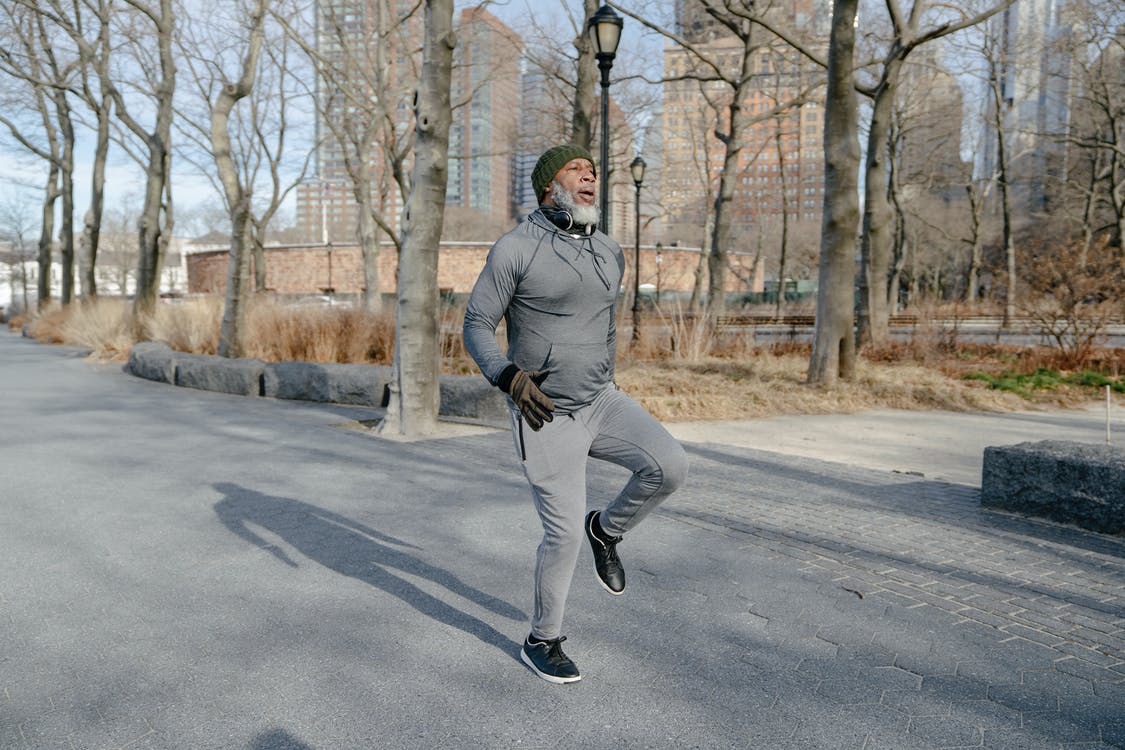If done correctly, speed training does not increase the risk of injury; rather, it decreases it. Speed training causes your muscles to move through a wider range of motion, increasing flexibility. It works out more muscles and more muscle fibers within muscles, resulting in improved muscle balance. The results show that after 10 minutes of moderate intensity running, participants’ Stroop interference effect time decreased significantly. But that wasn’t the only advantage, according to Soya, “a 10-minute single-bout of moderate-intensity running elicits not only positive mood but also executive function, accompanied by increased blood flow to the brain implicated in inhibitory control and mood regulation.” Making this form of exercise a beneficial one for people’s optimum health.
This article gives you some of the benefits of going a regular quick jog:
1. It improves cardiovascular health
“Think of it this way: the more bicep curls you do, the bigger and stronger your biceps will be,” says Bronson cardiothoracic surgeon Dr.Alphonse DeLucia . The same thing happens when you work out your heart, which is your body’s most important muscle. As runners expose themselves to quick jogs it strengthens the walls of their heart in the process increasing its efficiency. When they have a stronger heart, they typically have a lower resting pulse rate and consume more oxygen. As a result, the organ can handle pumping more blood per beat, allowing the heart to do its job more efficiently. Furthermore, those who engage in running regularly reduce heart disease acquisition from around 35% up to 55% Dr. DeLucia added in a published article. Running aids in the prevention of blood clots in the arteries and blood vessels. It also promotes normal blood flow, blood pressure, and cholesterol levels.
2. It reduces stress
Running reduces anxiety and depression. It increases blood circulation to the brain and affects the part of your brain that responds to stress and improves your mood. This results in a temporary improvement in your reaction to stressful situations hence this can be a good workout routine for parents who are prone to so much multi-tasking. According to some studies, regular running can have the same effects as medication in terms of relieving anxiety and depression symptoms. Running is recommended during therapy and recovery to help with some of the symptoms of mental illness.
3. It helps build more muscle
Several health studies show that exercising for 30-40 minutes four to five days a week at an intensity of 70-80 percent heart rate reserve is the best way to promote muscle growth with cardio. The difference between your maximum and resting heart rates is your heart rate reserve. These findings suggest that short-duration, high-intensity running builds leg muscles, whereas long-distance running causes significant muscle damage and inhibits muscle growth. High-intensity, short-duration running, such as sprinting, may build muscle, whereas long-distance running may inhibit muscle growth. Running does build muscle as long as you keep challenging yourself. Running primarily strengthens lower-body muscles such as the glutes, quads, and hamstrings. Carbohydrates are essential for muscle as well as proteins before and after your workout.
4. It promotes longevity
Some studies have also discovered a link between running and a longer life expectancy. A meta-analysis published in the British Journal of Sports Medicine in 2019 discovered that running reduced the risk of premature death by 27%, including a 23% lower risk of cancer death. The result further showed that those who jog regularly live approximately five years longer than non-runners. Any type of exercise is good for you, according to Cleveland Clinic’s Dominic King, D.O., but running is a great whole-body workout.
5. It strengthens the respiratory system
When you run, the endurance capacity of your respiratory muscles, including the diaphragm and intercostal muscles, increases, allowing you to take deeper, fuller, and more efficient breaths. Regular exercise causes capillaries to grow, allowing more oxygen to reach your muscles faster. The more you exercise, the more alveoli you produce. These absorb oxygen and deliver it to the capillaries. Exercise causes the muscles to work harder, which increases the rate at which the body breathes, resulting in a greater supply of oxygen to the muscles. It also improves circulation, making the body more efficient at removing excess carbon dioxide produced by exercise.
6. It boosts the immune system
There is a link between running intensity and duration and immune function. Workouts that are moderately intense tend to strengthen the immune system. For most people, this translates to an hour of steady-state running. Running for 10 miles or more, or to exhaustion, can temporarily weaken the immune system. Inflammatory responses and stress hormones are reduced during regular physical exercise practices, while lymphocytes, NK cells, immature B cells, and monocytes are increased. Thus, there is an increase in immune vigilance as well as a decrease in the systemic inflammatory process, indicating that regular physical activity helps to improve the immune system while also preventing respiratory diseases and thus protecting against infections like COVID-19.
7. It helps maintain healthy body weight
A half-hour jog burns approximately 300 calories. Jogging increases metabolism and is more effective than walking. A healthy diet combined with regular jogging will help you lose those unwanted pounds. Parents get lesser time for exercise because of their kids but they can tweak some of their activities for example using a jogging stroller to get back in shape as they stroll around with their children. Jogging not only burns fat but also aids in weight maintenance. If you enjoy running, at about 20- to 30-minute runs per week, it will help you burn a lot of calories and may even keep burning excess calories accumulated in your body. Running is an excellent form of weight loss exercise.
8. It improves sleep
Running has been shown to aid in the establishment of a regular sleep schedule. Chemicals released during and after exercise relax the body and promote deep sleep. A regular sleep schedule is beneficial to your brain and improves your mental health. While there are numerous exercise routines and movements to choose from, only moderate-intensity aerobic exercises, such as walking, have been shown to alleviate insomnia. Aerobic exercise that is strenuous, such as running or resistance weightlifting, has not been shown to improve sleep.
9. It helps build stronger bones
Jogging influences bone density as well as muscle strength and endurance. Bone density refers to the number of bone minerals contained within the bone and having a high bone density increases the bone’s strength. In studies, the impacts of running’s foot strike have consistently been shown to help develop bone density. As a result, jogging improves bone health and lowers the risk of developing bone-wasting diseases such as osteoporosis. Running and walking have been shown to increase bone density and help prevent osteoporosis, but there are many other ways to achieve the same results with less impact. When incorporating new exercises into your routine, always consult with your orthopedic surgeon first.





